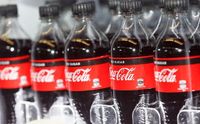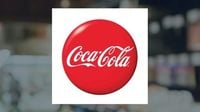It’s been a year of headline-grabbing moves and steady performance for Coca-Cola and its sprawling network of bottlers and partners. As 2025 draws to a close, investors and industry watchers alike are asking: is the world’s most iconic beverage brand still a refreshing value, or is the fizz starting to go flat? The numbers, as reported by Simply Wall St, The Motley Fool, and MarketBeat, tell a story of resilience, strategic evolution, and a few bold bets shaping the future of the Coca-Cola system.
Let’s start with the stock itself. As of November 10, 2025, Coca-Cola (NYSE:KO) shares have delivered a 3.8% gain over the past week and are up 14.7% over the last year. That’s no small feat in a year when the broader Consumer Staples sector has struggled to keep pace with the S&P 500. In fact, as The Motley Fool points out, Coca-Cola is one of only ten staples sector stocks to notch a double-digit return this year, rising 12% year-to-date while the sector as a whole lagged behind.
What’s driving this resilience? For starters, Coca-Cola’s reputation as a blue-chip, core holding is well-earned. With a nearly $300 billion market cap and annual earnings per share (EPS) expected to rise 3.7% to $2.99 in 2025, the company’s slow-and-steady approach continues to appeal to long-term investors. Notably, Coca-Cola hasn’t missed a sales or EPS estimate in at least five years, according to Koyfin data cited by The Motley Fool. That kind of predictability is hard to come by—and it’s a big reason why Warren Buffett’s Berkshire Hathaway remains a 10% stakeholder.
But it’s not just about steady earnings. Coca-Cola’s dividend story is equally compelling. The company is a member of the exclusive Dividend Kings club, having raised its payout for an astounding 63 consecutive years. With a current yield of 2.9% and a 4.5% annualized dividend growth rate over the past decade, the combination of rising income and modest earnings growth has produced a compelling total return profile. Analysts project adjusted EPS to climb from $2.99 in 2025 to $4.26 by 2030, which—using a 22x P/E ratio midpoint—implies a 2030 share price of around $93. Add in over $11 of cumulative dividend income, and investors could see an estimated five-year total return of about 55%.
Yet, even the world’s most recognizable brand isn’t immune to change. Recent headlines have highlighted Coca-Cola’s expansion into healthier beverage categories and digital transformation efforts. These moves are more than window dressing; they’re part of a concerted effort to adapt to shifting consumer preferences and regulatory scrutiny. According to Simply Wall St, the company is also making waves with sustainability commitments and a flurry of product launches, all of which have helped fuel renewed optimism among investors.
From a valuation perspective, things get interesting. A discounted cash flow (DCF) analysis by Simply Wall St pegs Coca-Cola’s fair value at $89.90 per share—about 21.5% higher than its current price. That suggests the stock is undervalued by a significant margin, at least by this method. The company’s most recent free cash flow stands at $5.60 billion, with analyst projections estimating that figure will rise to $19.40 billion by 2035. Both short- and long-term forecasts point to steady growth and robust cash generation.
However, the picture is a bit more nuanced when looking at traditional valuation metrics. Coca-Cola currently trades at a price-to-earnings (PE) ratio of 23x, just above its “Fair Ratio” of 22.7x calculated by Simply Wall St. This slight premium suggests the stock is trading almost exactly where it should be, given its profit margins, growth outlook, and risk profile. In other words, while the DCF model says “undervalued,” the PE ratio indicates things are about right.
Of course, valuation models are just that—models. Ultimately, investment decisions are shaped by narratives and expectations. Simply Wall St highlights two prevailing narratives among investors. The bullish camp sees a fair value of $71.00 per share, underpinned by a globally dominant brand, resilient recession-tested business model, and six decades of dividend increases. This group points to Coca-Cola’s ability to adapt to health-conscious trends, expand in emerging markets, and invest in digital tools as reasons for optimism. On the other hand, the bear case sets fair value at $67.50, citing headwinds like currency volatility, rising input costs (including tariffs on aluminum), regulatory challenges, and increasing scrutiny over sustainability. This narrative expects Coca-Cola to remain a global leader but with slower growth and a future where it’s valued more for income than expansion.
Meanwhile, the Coca-Cola system itself is undergoing significant change. On November 7, 2025, Coca-Cola Consolidated—the largest independent Coke bottler in the U.S.—completed a $2.4 billion repurchase of 18.8 million shares from a Coca-Cola Company subsidiary. The shares were acquired at $127 each, financed with a mix of cash reserves and a $1.2 billion, 364-day term loan arranged by Wells Fargo. This transaction marks a new chapter in the relationship between the two companies. As Coca-Cola Consolidated’s chairman and CEO J Frank Harrison put it, “The purchase of these shares from the Coca-Cola Company advances our commitment to build long-term value for all stockholders. This transaction is also a strong signal of our mutual confidence in the long-term health of the US Coca-Cola system.”
Following the deal, the Coca-Cola Company relinquished its seat on Consolidated’s board, further cementing the bottler’s independent governance. Coca-Cola Consolidated also announced a reduction in its share repurchase program from $1 billion to $400 million, with about $136 million available for future repurchases. Despite these changes, both companies remain aligned in their goal of delivering beverages with speed, scale, and excellence to more than 60 million consumers, as Henrique Braun, EVP and CEO of the Coca-Cola Company, emphasized.
Beyond the U.S., Coca-Cola Europacific Partners (NASDAQ:CCEP) has also seen a flurry of institutional investment activity. Vestmark Advisory Solutions Inc. increased its holdings in CCEP by 161.3% in the second quarter of 2025, while Bank of New York Mellon Corp and several other institutional investors also boosted their stakes. As of the latest filings, institutional investors collectively own 31.35% of the company’s stock. Analyst sentiment remains generally positive, with a consensus “Hold” rating and a recent reaffirmation of “buy” from several firms, according to MarketBeat.
CCEP’s stock performance has been steady, with a market capitalization of $42.14 billion and a PE ratio of 17.34. The company’s financial profile is solid, with a debt-to-equity ratio of 1.15 and a current ratio of 0.83. A recently declared dividend of $1.25 per share, payable in December, adds to its appeal for income-focused investors.
As Coca-Cola and its partners continue to evolve—balancing tradition with innovation, and stability with strategic risk—the company’s future remains a subject of lively debate. Whether you’re a dividend devotee, a growth seeker, or just a fan of a cold Coke on a hot day, there’s no denying the enduring allure of this global beverage powerhouse.

